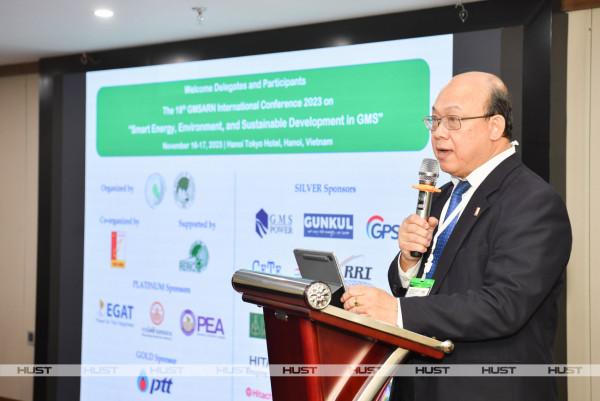

Their goal is to make the device compact, easy to use and low-cost. The team designed and made it themselves. Minh and his friends investigated gasses such as Ammonia, NH3, H2S, and other gasses such as NO2. Initially, the team created a material sensitive to more gasses, but then they decided to focus on measuring one gas - NH3.
The sensor is built to be completely able to meet the original set goal. Based on the sensor's gas response graph, the device’s high response time and recovery time still have spaces for improvement. Meanwhile, the gas measuring device works well and the functions programmed on the device operate stably.
The algorithms and controls inside the device are implemented by a group of students based on the knowledge learnt at the School of Engineering Physics and other reference documents, and articles. The methods of measuring and processing experimental data are also referenced from international articles and books by leading professors in the Vietnamese gas sensing field.
Reporting by Gia Han - Translating by Khanh Van - Editing by Ha Kim
Author: Hà Kim
Newer articles
Older articles
 Hanoi University of Science And Technology And 4...
Hanoi University of Science And Technology And 4...
 HUST promotes partnerships with leading universities in the...
HUST promotes partnerships with leading universities in the...
 HUST co-hosted the 18th GMSARN Conference, fostering...
HUST co-hosted the 18th GMSARN Conference, fostering...
 Strategic Partnership Forges Between Hanoi University Of...
Strategic Partnership Forges Between Hanoi University Of...
 HUST President Pays Visits To Korean Academic & Industrial...
HUST President Pays Visits To Korean Academic & Industrial...
 POSCO TJ Foundation Awarded Scholarship To Hust Students
POSCO TJ Foundation Awarded Scholarship To Hust Students
 HUST advances staff capacity through "EQUIP" Project in...
HUST advances staff capacity through "EQUIP" Project in...
 From adversity to acclaim: The resilient journey of Assoc....
From adversity to acclaim: The resilient journey of Assoc....
 HUST Promotes Business Collaboration In Logistics And...
HUST Promotes Business Collaboration In Logistics And...
 HUST's imprint at Vietnam International Innovation Expo 2023
HUST's imprint at Vietnam International Innovation Expo 2023